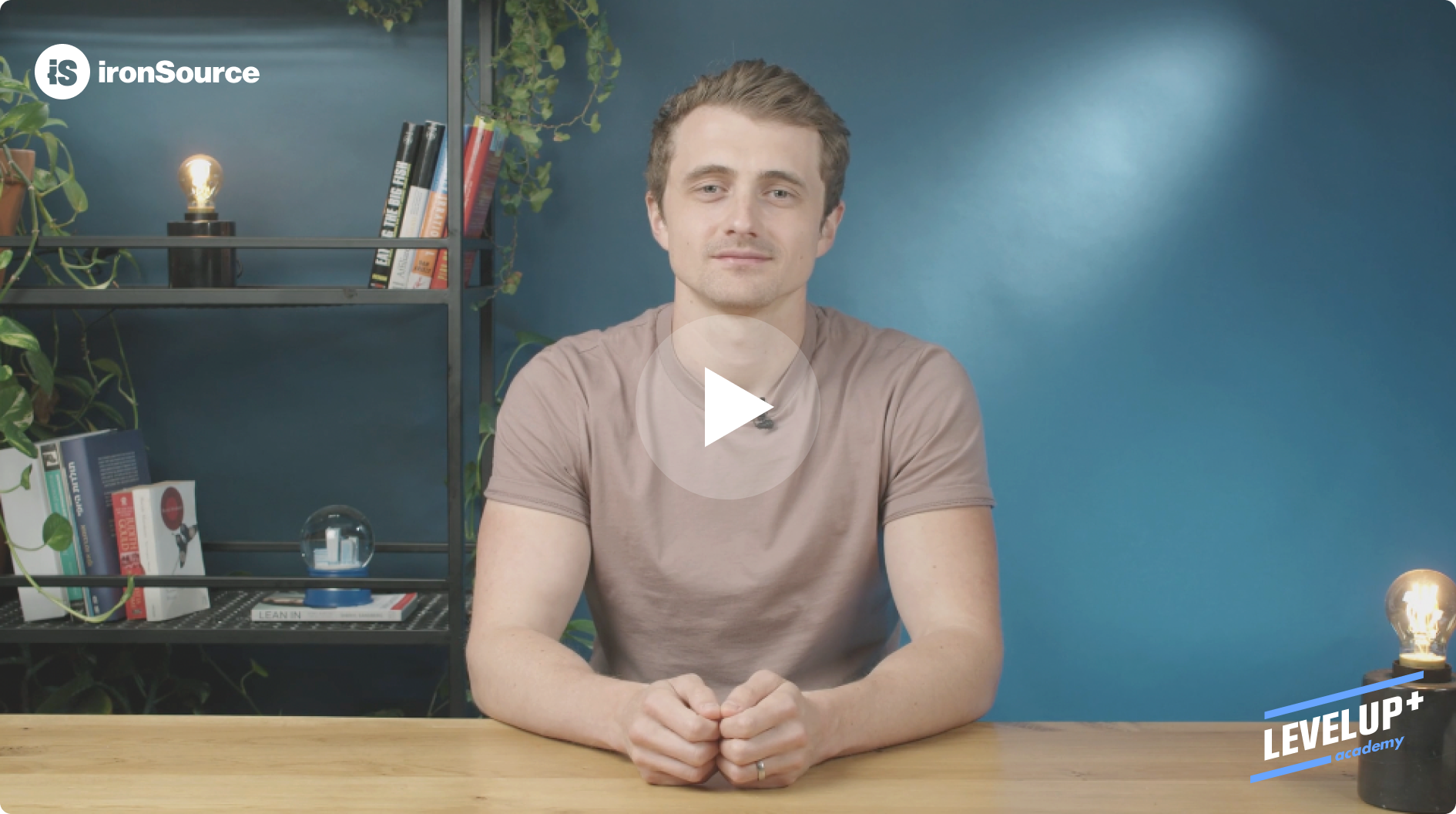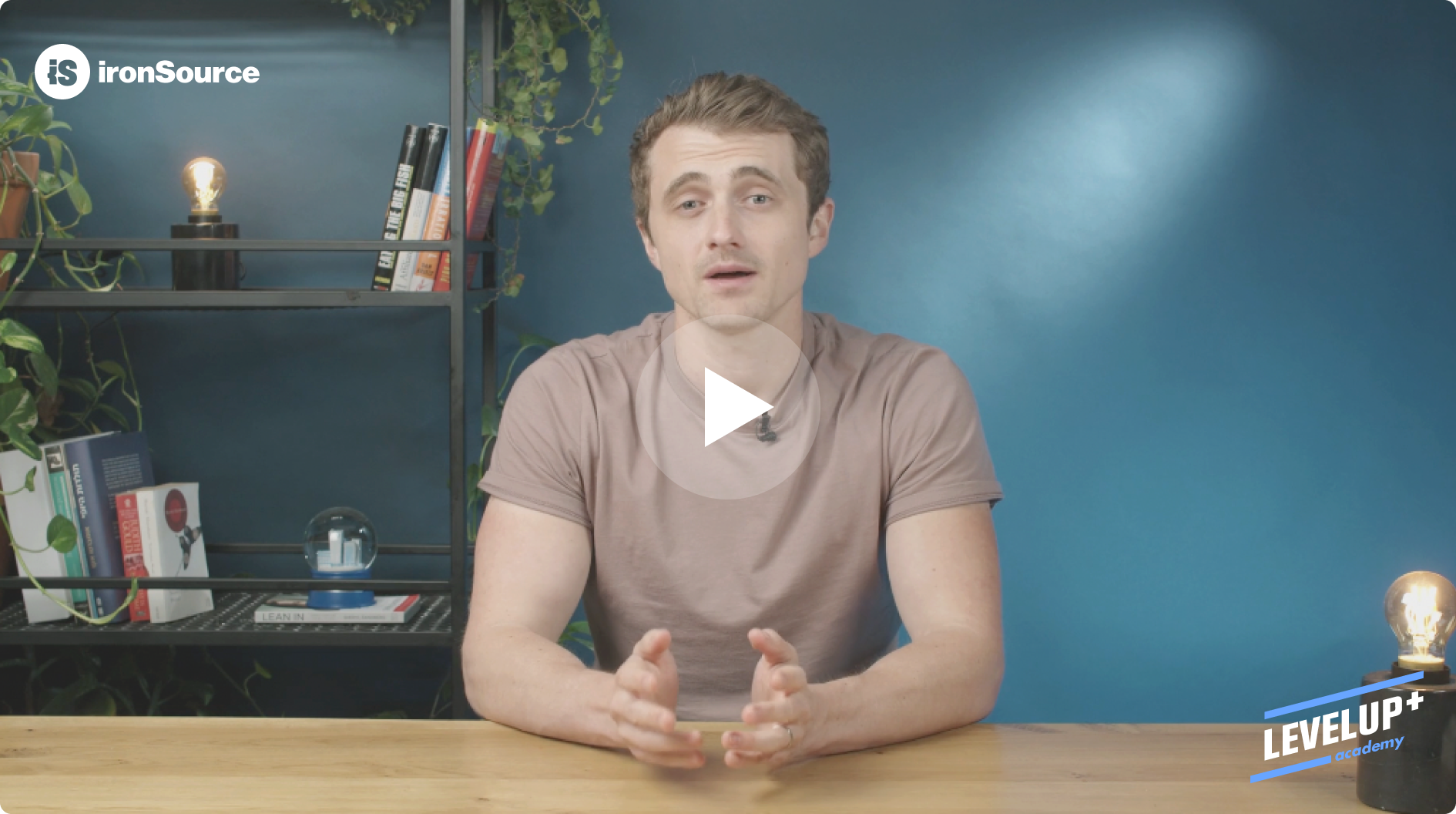The what, why, and how of interactive ads
This course is all about interactive creatives. Here, Adam Stevens, VP Product at ironSource Luna, takes you through the fundamentals of interactive ads: what they are, why they’re must-haves for any UA strategy, and how to build ones that drive performance.
Hi everyone, I’m Adam Stevens,VP Product @ ironSource. I also co-founded Luna Labs, which is now ironSource’s creative management suite. We provide technology to help game studios and app developers create, manage and optimize their creatives efficiently.
This session is dedicated to interactive ads, also known as playables. In my opinion interactive ads have been one of the best things to happen in the world of mobile ad creatives in the last few years.
By the end of this session you’ll understand exactly what interactive ads are, why I’m so enthusiastic about them, and how you can create high impact interactive ads yourself to scale your UA activity.
What are interactive ads?
Interactive or playable ads are exactly what they sound like — ads you can play.
Basically, playable ads offer users interactive snippets of gameplay, anywhere from 30 seconds to a minute, and then display a call to action at the end (like, install the app).
Playable ads do a great job of providing users an enjoyable ad experience that not only shows them what the advertised app is really like, but also pulls them in for more and gets them fully engaged.
It’s important to understand that playable ads are a type of creative, like videos, and you can place these creatives inside different ad units – like interstitials or rewarded videos. You can learn more about these ad units in the course titled “Growing your user base”.
Why interactive ads are a crucial part of your UA strategy
Let’s talk about why you can’t ignore interactive ads if you want to have a successful UA strategy in today’s market. There are four main reasons.
First of all, playable ads can massively increase the scale of your UA campaign. Compared to other creatives, they tend to have higher IPMs, or installs per one thousand impressions, which as you’ve learned in previous courses is key to unlocking scale. That’s partly because the majority of playable ads are shown to users while they’re playing another game…which means they’ll already be in the right mindset to interact with a “mini game” like your playable. Not only that, playables can increase the quality of the users who you convert from your ad campaign.
Being able to showcase the best of your gameplay, and let players “try before they buy”, helps filter out the least relevant users and converts those who know what they’re going to get. This helps you increase your game’s retention and ensures you spend your marketing dollars more efficiently.
Another big advantage of interactive ads is the world of in-ad data, and the possibilities for optimization it brings. You can analyze in-ad metrics like time to engage, time to complete, drop off points, and loads more. Based on this data, you can then begin to experiment with different variations and really optimize the performance of the ad. Make sure to tune into my other session in this course dedicated to in-ad data to learn more.
Finally, another great benefit of interactive ads is that you can use them as a testing ground for new game features. I’ve seen many developers roll out new concepts into playable ads and use the performance metrics to inform their decision about implementing the feature into the game itself. If the ad gets a high IPM, it’s a double win: you’ll get installs and proof of concept!
How to build interactive ads:Technologies
There are a few approaches to creating playable ads:
The first approach is by using a game engine or technology like Luna Labs that allows you to develop a fully customized and game-like experience in HTML5 and Javascript. Basically, you get to replicate your game in a lightweight version. This is the optimal approach because it’s flexible and the quality stays high – but consider that it requires a developer.
The second approach is using interactive video. You’re able to use gameplay footage and let the user interact at multiple points within the video that gives them the feeling that they’re controlling the experience while showcasing the game’s core features. This approach doesn’t require a developer and often a shorter build cycle – but compared to the previous approach, it’s limited in terms of what you can provide to the user.
Coming up with a concept
Now that we know the what and why, let’s dive a bit deeper into the how of playable ads. Every great playable starts with an engaging and creative concept. But know, that you don’t need to be the world’s most creative person to come up with great concepts. In fact, there’s a pretty simple formula.
Basically, coming up with great playables requires you to be what we call a “creative sponge” . … You need to be constantly researching creatives, absorbing concepts from other games, and get your ‘idea radar’ going. So let’s go over some tips on how to do just that:
First, look at creative intelligence platforms like AppQ, App Annie, or Sensor Tower to get a good insight into what’s going on in the mobile gaming world, and what kind of creatives are popular at the moment. Start by looking at your competitors to see what works best for them. But don’t just look at creatives in your genre, look at other genres and see if you can apply them to your game too.
Social media is another powerful tool for thinking of new creative concepts. If you go to Instagram and type in a hashtag with the name of an app, you will be exposed to thousands of ideas. The most exciting is the fan art from people who have already downloaded the app, installed it, and enjoyed it. There are creative people out there who have already created some themes and ideas that you can model after.
Designing interactive ads
Once you have your concept, now it’s time to design it! We’ve been designing and developing high-impact playable ads for top games and brands since before the ad unit exploded … Here’s what we’ve learned.
Don’t replicate your game
As the saying goes, less is usually more. The same goes for interactive ads. That means your playable ad shouldn’t necessarily be an exact replica of your game, but rather a stripped down, simplified version.
Condense your game to one core element. Or, go even further and strip your game completely. For example, if you have a complex word game, you wouldn’t replicate the app’s gameplay to a tee. You’d create another, much simpler word game and use that in your playable ad instead, knowing that if someone enjoyed a simple word game, chances are they’d probably enjoy the more complex version too. That way, you’re still going after the right target audience, but you’re not going to get bogged down by complicated mechanics.
Keep your best features
In the stripped down version, you don’t want to leave out the features that make your game unique. In every game, there are special features, animations, characters, or other elements that make your gameplay stand out from the crowd. Be sure to keep two or three of these in your playable ad.
Lower the learning curve
In your actual game, it might take a while before users get the hang of how to play. But in a 30 second playable ad, you don’t have much time to teach your users how to play. The user has to understand how the playable ad works in the first 3 to 4 seconds. There are a few ways to help with that – you could use a “hand” as a cursor that shows the user where to swipe, highlight key buttons, offer hints, and provide concise and explicit instructions. If not, users won’t understand how to engage with the playable, and may x-out. Or worse, install the app, and uninstall it later.
And that’s it for now! Start applying these tips to your creative strategy today and see the results come in.



